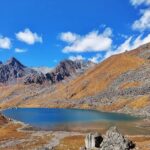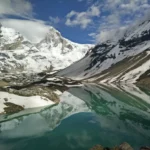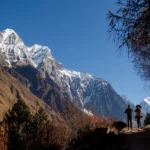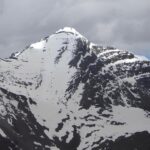Doodhpathri – Toshmaidan Trek is our latest addition to the list of beautiful treks to do in Kashmir. The best time to visit the Doodhpathri Trek is from July- September. Doodhpathri Trek is pleasant during these months.
During the monsoon and post-monsoon seasons, the trek remains accessible for trekkers.
The Doodhpathri trek becomes inaccessible during the winter season due to heavy snowfall. In the spring season, the higher reaches of the trek remain buried under snow, making it challenging to traverse. As a result, the best time to explore the Doodhpathri Trek is during the summer months from July to September, when the trail is accessible.
Here is a detailed guide on Doodhpathri trek’s best time, the months to avoid, the best time to explore Doodhpathri, and other factors to consider before embarking on this trek with beautiful alpine lakes and flower-covered valleys.
Doodhpathri Trek in July
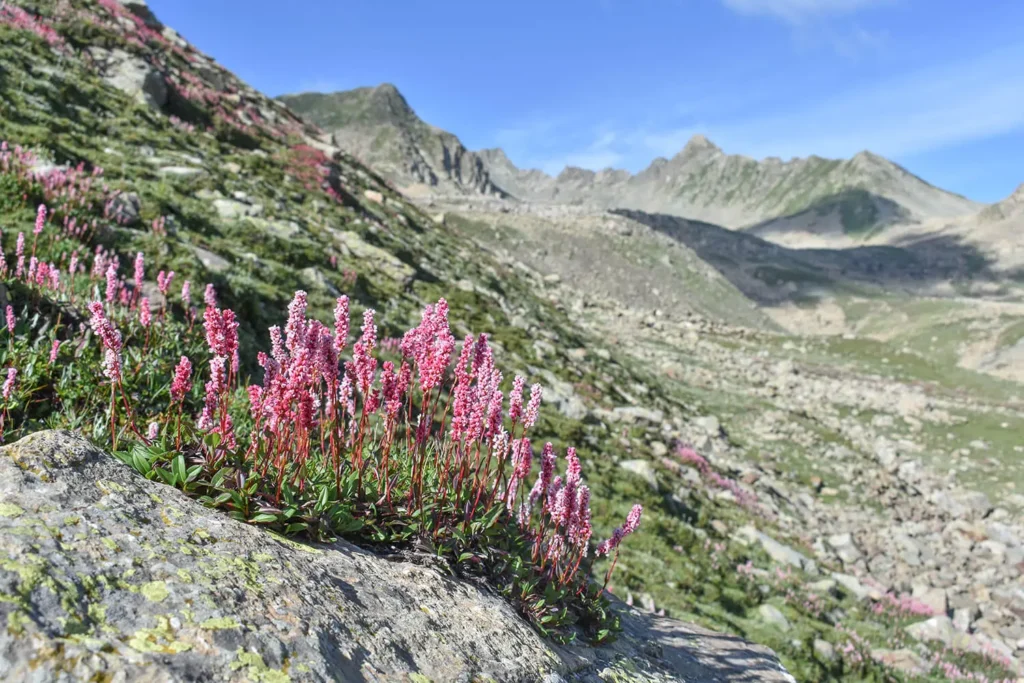
Doodhpathri trek welcomes trekkers when many of its contemporaries remain closed due to the monsoon. The trekking season of Doodhpathri begins in July when other Himalayan treks in Uttarakhand and Himachal remain shut.
In July, Doodhpathri trek turns into luxuriant valleys blooming with wildflowers. The snow recedes from the trail, and the verdant valleys turn into dreamy landscapes.
While it is a peak monsoon season in the rest of the country, Doodhpathri Trek is in the rainshadow region. Owing to this, the trail remains comparatively dry during the monsoon. Expect mild afternoon showers in Doodhpathri if you are trekking in July – August.
Doodhpathri Trek in August
August is the most popular month for Doodhpathri trek. The valley will be greener, and meadows are carpeted with vibrant blooms. The campsites of Asthar Valley, Gardar, and Gunsawar are perfectly carved, offering you an exquisite set of landscapes. In August, you will also witness herds of sheep and horses grazing in the meadows.
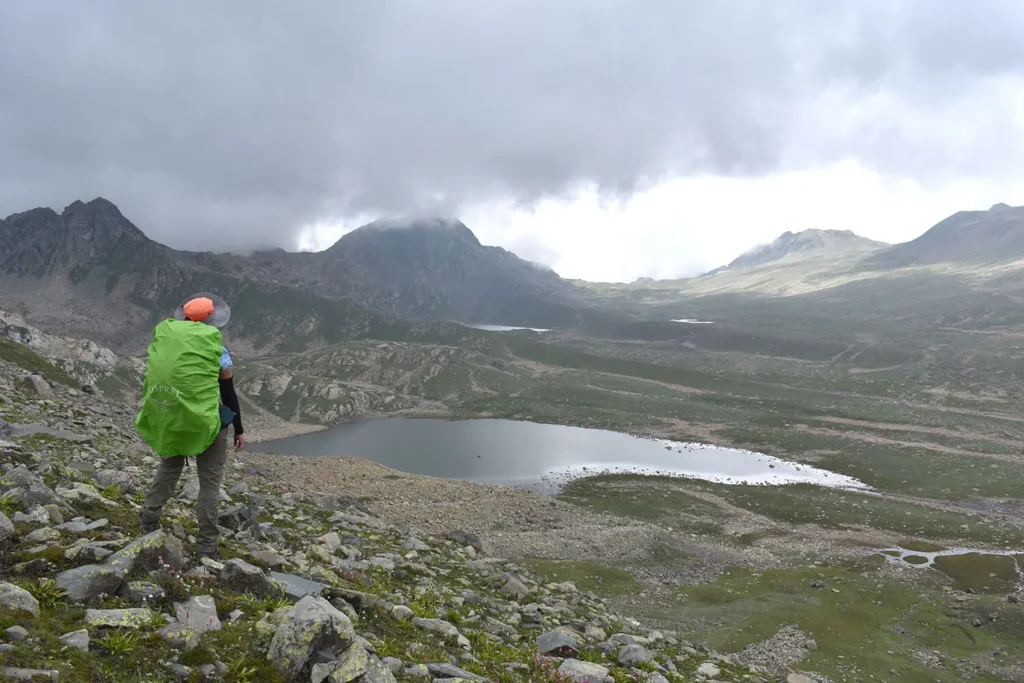
Doodhpathri Trek in September
September is the driest month in Doodhpathri. You will witness a change in the ccolours of the valley. The monsoon clouds depart, making way for a clear blue sky.
However, the trail will be secluded with very few trekkers in September.
The meadows on Doodhpathri Trek change colours and the quantity of wildflowers also reduces. As the weather becomes colder, the Doodhpathri season is wrapped up by mid-September.
Doodhpathri in Winter – December to March
Doodhpathri in winter months is difficult to access. It starts snowing in Doodhpathri by the end of September. The trail is difficult to access due to heavy snowfall. In addition to this, adverse trekking conditions are not suitable for attempting Doodhpathri in winter.
Doodhpathri Trek Highlights
The raw beauty of Kashmir is best experienced when you explore the offbeat path and trek in the interiors of the valley. Doodhpathri – Toshmaidan, our latest addition to the list of beautiful treks to do in Kashmir takes you to the interior of the Budgam District and unravels the hidden beauty of Kashmir.
The trek is located in the Budgam district and starts from a place called Doodhpathri, a famous tourist destination accessible by road. Doodhpathri is also known as the Valley of Milk. Srinagar to Doodhpathri distance is approximately 55 km, around a 2.5 hrs drive from Srinagar. The valley of Doodhpathri derives its name from the milky water of the Shailganga River that flows through the valley. Doodhpathri gained popularity after the release of the Bollywood movie Raazi. Dilbaro, one of the songs from the movie featuring Alia Bhatt and Vicky Kaushal was shot in this location.
Doodhpathri Trek is a new addition to the Kashmir Trekking Map. The unmatched beauty of this newfound trek of Doodhpathri in Budgam District is as beautiful as its contemporaries. The trek flaunts six beautiful alpine lakes and lush green valleys dotted with wildflowers.
Doodhpathri trek difficulty is categorized as moderate. The trek is seven days long and you will cover a total distance of around 47 km. The trek takes off from an altitude of 6,175 ft in Srinagar and climbs to the highest elevation of 13,060 ft when you reach Pamsar Lake.

